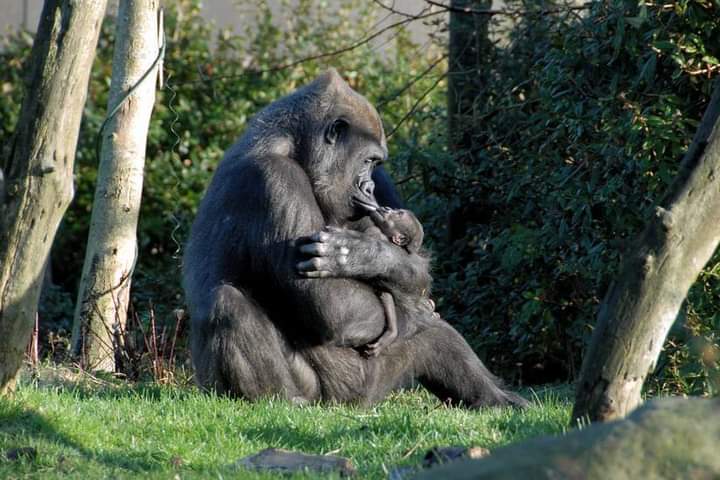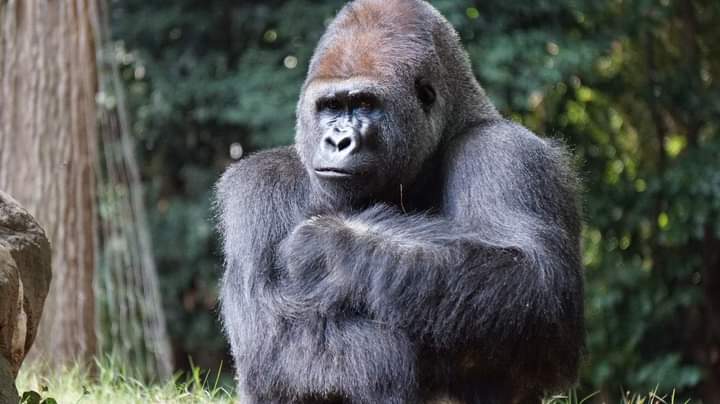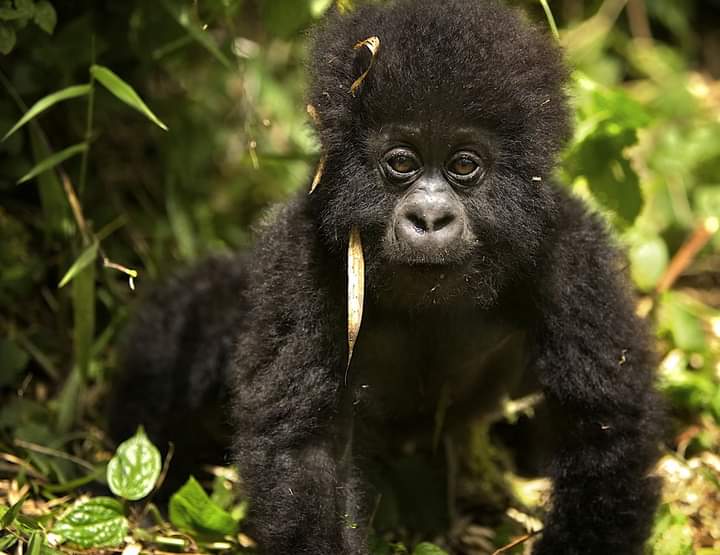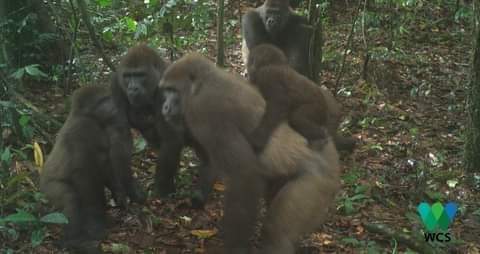
Female African gorillas will remain with an alpha silverback that they feel or is, strong enough to protect them and their infants from leopards and from other silverbacks that might kill their infants.
African Gorillas are very sensitive to our diseases, they have a ‘virgin’ immune system and cannot cope with even our simplest illnesses. For this reason, captive gorillas found in good and responsible zoos are given the same vaccines as human babies and toddlers.
One of the greatest problems gorillas face is weak law enforcement and this is why the mountain gorilla population is slowly rising, because conservationists never gave up and managed to secure the important and vital and fragile support of the Government in that area.

Throughout their habitat (all gorillas) the killing and trade in any gorilla products (including their stolen infants) are illegal,. Due to frustratingly weak law enforcement, gorilla products (like severed hands), and also trade in meat and selling infants continues to be sold in markets and similar throughout the countries they habitat.

African Gorillas are fantastic mothers and usually have their first infant at about 10 years of age, although they become sexually mature at 6 years. Infants are weaned between 2-4 years, but most often only at 3 years. Their painfully slow reproduction rate makes it extremely difficult to increase their populations.
In the Central African Republic, in the Congo, we find Dzanga-Ndoki National Park — this is where you will see the highest density of western lowland gorillas in the world. Although they are the largest population of gorillas — their numbers have not helped them because in 20-25 years their population has dropped by more than 60%, but getting an exact number is difficult because some live in the remotest and densest places in the rainforest.
African Gorilla infants are intelligent and suffer greatly, some even die, when forcibly separated from their mother. In the wild, they remain with her up to 4 years, and if female, they remain with her for the rest of their lives — sometimes mature sons. Some (if) become subordinate males and the alpha male allows them to play and cuddle infants, but not with/to his mature females. And some young males, once sexually mature (about 10 years-old) leave to find and form a troop of their own.

Mountain gorillas have longer hair than the other gorillas as they live in a colder climate. This long hair is most obvious on their infants!
A female gorilla usually has her first baby at around 10 years-old. A male only breeds when he has a troop of his own and that is 12-15 years.
Every day, a gorilla builds a nest to sleep in and to rest during the day, and these nests are very important because conservationists and researchers count them to get a number for the population of gorillas in an area.
It builds a nest the gorilla sits and pulls branches and leaves around its body.
Gorillas are not like chimpanzees, or Bonobos, they live life on the ground. Mature males are too heavy to climb trees, but the Western Lowland males sometimes do. In the heavier species of gorilla, the mature males nest on the ground and sometimes the females and younger (weigh less) gorilla infants nest in the trees.
Cross River African Gorilla.

You get four different types of gorilla and this is the rarest — only about 200-300 of them left in the wild! They inhabit, but kind of scattered around, in at least 11 groups across the lowland mountain forests and rainforests of Cameroon and Nigeria.
Male African gorillas are sexually mature at about 10-years-old, but only get their silver back at 12 -14 yrs, before that happens they are called ‘black-backs’.

